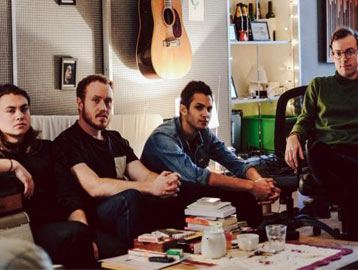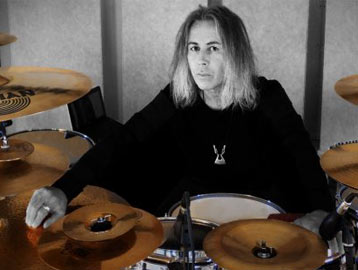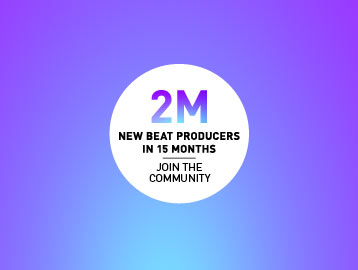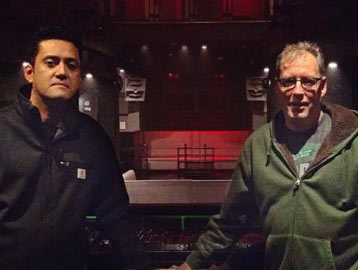NEW
Artist Interview: Siegfried Meier

With his Beach Road studios in Goderich, one of Canada’s most beautiful towns, Bavarian-born Juno Award winner Siegfried Meier has created a special place for bands, songwriters and producers. The idyllic surroundings and the studio’s holiday home appearance are a complete contrast to the dark metal and hard rock projects that have been produced here for bands such as Kittie, Baptized in Blood and Woods of Ypres.
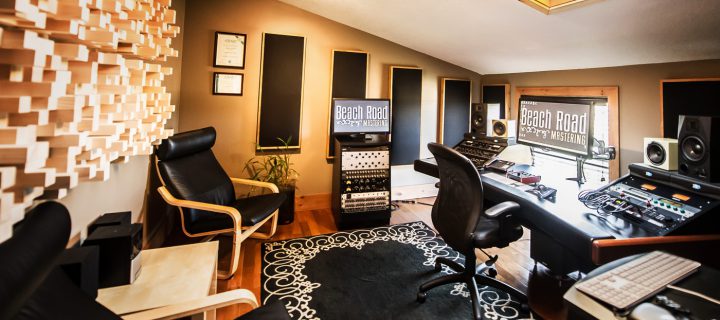
Siegfried, you built your studio together with friends and family. What about that project was most important to you? What did you focus on?
I had worked out of several studios and spaces for many years, including a studio out of my small apartment. Noise was always a concern where I was situated, and the other spaces were restricted to the times we were able to work as well as how much stuff we could leave set up and for how long. These frustrations led to the eventual decision of building a dedicated recording studio, away from the city, where artists could live and focus on being in a creative environment. I had actually been planning to build a space like Beach Road for a decade prior, but it took that many years of building up clientele and making records to decide exactly where and how it was going to be done. I really wanted a space that was in the vein of the classic rooms I had grown up reading about – The Chalet north of Toronto, Dark Horse in Nashville, Le Studio in Quebec and other places such as that, where a band lives on site and is away from the distractions of the city, free to focus on music and being creative. I wanted it to be a spacious environment, with a large, big sounding live room and lots of extra space to keep different recording setups and stations up and ready to go at any time. I’m a tech as well and I love gear, but it’s such a waste of time and energy to continue setting up things every time you feel the need to create. Having things ready to go so you just plug in and create is very important to me.
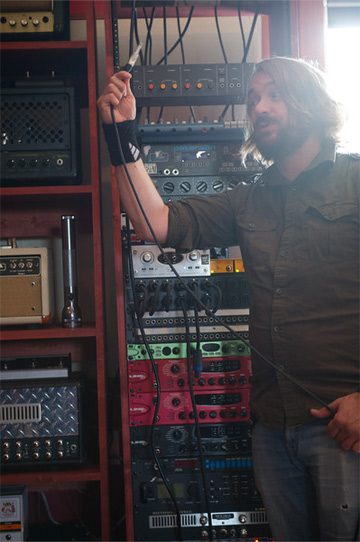
Looking back, what would you have liked to know before building your studio? Did you make any decisions in the process you regretted later?
Because the entire space was rather large (nearly 3000 sq ft) and budget was certainly always a concern, I had to cut a lot of things that multi-million dollar, commercially operated recording studios consider a necessity. My main concern was having ultimate isolation between the tracking room and main control room, since that’s where the lion’s share of work was going to be done. The other issue was that much of the gear was acquired over the course of a decade, and I didn’t really have a sense of just how much stuff was going to show up or how it was going to be wired in. A proper machine room and extra storage space are probably the 2 biggest things I regret having to cut from the project because of extra costs involved. However, being where we are in the country, building onto the studio in the future is certainly a viable option, so it wasn’t something I really concerned myself with too much. We built all of the acoustical treatments ourselves, and the entire control room was built on such a budget that it still shocks me. The designs were done by a mathematical and acoustical genius by the name of Lee While, who is also a good friend and instructor at The Ontario Institue of Audio Recording Technology. My pal Robbie McCowan, who built the entire studio, did the work on the acoustical treatments with myself so we were able to keep costs at a minimum. I had another good friend, Yannick Burdan, who is also a master carpenter do a few of the other amazing pieces for me, including the rear wall skyline diffuser in the mastering room. Looking back at it all now a decade later, I wouldn’t change a single thing about how it was done. It’s absolutely perfect.
The ProSound article highlighted your kitchen, which is part of your studio and not separated. What role does it play in the recording process?
The kitchen is actually right outside the control room, and essentially is the first room you walk into when you set foot into the studio. While the bands have their own 1000sq ft home with full kitchen and other ammenities just across the parking lot, it was important to us to have a central space that we could wine and dine in – where fresh cookies and pastries and meals could be made and enjoyed by the eager and hungry mouths of hard working artists and bands.
“A kitchen is such a social hotspot in every space…”
… that we felt it was a necessity to have a spacious area that we could cater and entertain in. Plus, having drinks and food all over the control room and near precious gear always scares me…so keeping the kitchen close by negates the need for that!
Your studio is full of original amps, stompboxes, tape machines and more. In which way do you think the sound differs from the sound of virtual amps and effects?
The virtual stuff has always seemed to attempt to clone certain classic devices from our audio past. While I also have many different Pro Tools and digital DAW rigs here at the studio, it’s always been important for me to understand the original pieces that came before the plugin versions – why did they become classics, and how can they still be used in a modern environment. Most people know me as the deal master, and I’m always searching for gear and constantly hunting and researching different things.
“The beauty of the old analog stuff is that generally no two pieces ever sound alike…”
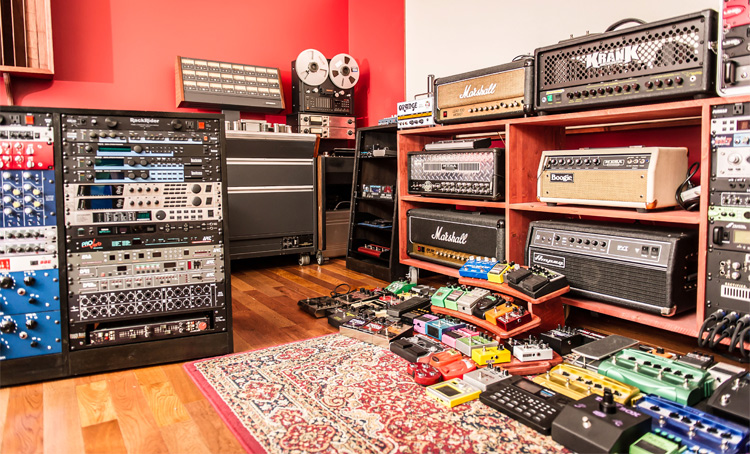
…and usually when a plugin version is modeled they try to find the “holy grail” piece that sounds the most accurate and the best. I like when things don’t necessary sound accurate or the best! I love the variances that analog gear gives me – the fact that one piece can sound great one day, and then just kinda okay the next. There are so many reasons for this, and in the end the most important one is that not every piece of gear will be right for every artist or for the song at hand. Having a physical piece of gear to hold onto and tweak is also a huge part of the experience. I’ll often just do things because of the way that device feels in my hands, and what it compels me to do.
How much original and “vintage” equipment do you own? Does your DIY mentality also stretch out to amps and effects? Do you also modify them, corresponding your individual needs and ideas?
Haha – there’s too much to mention in a short article!!! I do a lot of gear building as well, from rackmount processors to amps and effects pedals. There is something so satisfying about building a piece of electronic equipment from scratch, and hearing the sweet glorious tones coming out of it when you are done after slaving over it for 60 or 80 hours, or more! That being said, I’ve put in tons of extra time when something doesn’t work and it can be one of the most gut wrenching, disappointing feelings in the world as well. It’s important to step back at times and take a break, allowing your mind to relax and troubleshoot all on its own before heading back into the workshop. At times, I do modify and wire things specifically to do what I want them to – it all just depends on the situation at hand. I’ve been known to build devices even on the day of a tracking date – whatever is needed to keep the session moving, but without ever keeping the artist waiting. It’s very important for me to focus on the music and client first.
In your opinion, what is true anaolg sound? What does a recording need to sound truly “analog”?
If you really want to think of true analog, then a live experience is about as true as it gets. The imperfections of whatever is happening acoustically, and the nuances that only your ear and brain can pick up – never once hearing the reproduction of it so your thoughts and mind have a chance to pick it apart and decide that it’s not “up to par”. The second we attempt to capture something and hear it back several times, we always decide which sections need changing and what doesn’t meet our expectations. Personally, I don’t care what medium I use to capture sounds – it can be a cassette walkman, it can be an old G5 Pro Tools TDM rig, it can be my Studer A827 or it could be direct to a wax cylinder! It doesn’t matter to me. Every medium has its pros and cons, but the minute you use a medium, the mind is allowed to make judgements against the recording. I do try to keep my recordings and productions as organic as possible, preferring full takes of an artist’s performance over cut and paste or punch-in methods. The more realness and life I can keep in my work, the more I feel it speaks to the general audience, and the more longevity I feel it could potentially have. It’s something that’s been lost in the past few years, but it’s also something that was lost in previous decades and brought back again. The last time things were exciting and organic was the early 90s, when the punk/grunge sounds of Nirvana and other similar artists blew up and changed the entire landscape. Having grown up in the late 70s and 80s, Top 40 radio and the “perfect” productions of that era had a huge influence on me. But historically speaking, and looking back at the last 40 years of music I’ve been exposed to, it’s the organic approaches and nuances that have made the greatest impact on my life.
Which techniques do you use to reach an authentic analog sound in your productions? What do you take care of in the mixing process?
I make sure the artists and clients I take on can perform their parts and are prolific at their instruments. I maintain an ethical integrity in my productions that I find a lot of producers these days either have no clue about, or simply don’t care to excercise because it takes too much effort and work. I prefer to have musicians play their parts from beginning to end, naturally creating the dynamics as needed – pushing harder in the choruses on drums/vocals, and naturally delivering what’s needed for the song. Rides in mixing are always still needed and necessary, but if the recording truly already has those dynamics captured, it makes that job much easier and it sounds far more real and natural.
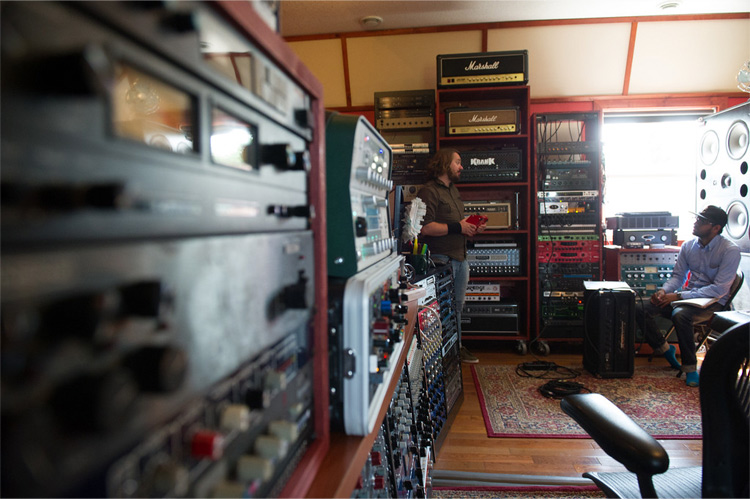
As a fan of analog music, how do you think about the digitization of music in general? Meaning not only the new production process, but also music streaming? How do you prefer to listen to music?
I personally never had a problem with standard 44.1kHz/16-bit CDs…especially if you used a good sounding player to begin with. I find it laughable that so many complained about the quality of it back then that are now accepting today’s streaming and online methods. That being said, I was one that created AAC versions of all my music into Apple’s iTunes early on, and I have subscribed to the latest services from Spotify and Apple Music – I thoroughly enjoy the accesibility of them, and as far as the sound is concerned, they’re good enough for on the go consumption of music. I do have an extensive vinyl collection as well, and I continue to collect older CD players, tape decks and open reel to reel machines that were considered very high end back in the day – especially when they can be had for pennies on the dollar these days!!!
“People will do what’s convenient for them, not what necessarily sounds the best. It’s why mixtapes existed…”
…and recording off the radio was such a big thing in the 80s – we all know that sounded horrendous! But it didn’t matter. What mattered was that we had access to the music, and we could enjoy it. These days, my clients listen to music in so many ways that having them hear the final mix over my studio mains isn’t necessarily going to tell them the real story. They have to hear it in their cars, over their phones and in ear buds. And even then, sometimes I have to tell them what is right and what’s not! It’s a tipping of the scales, as I call it. You take an average of it all, and together we make a decision on what sounds the best.
Which role models do you have? Are there any sound engineers or producers that inspire you?
Of course, growing up in the era that I did, the top guys always intrigued me – Bob Clearmountain, Andy Wallace, The Lord Alges (Chris and Tom), Jack Joseph Puig, Rick Rubin…the guys that inspired and influenced anyone working in this industry that’s around my age. These guys stood the test of time, and have very successful careers because they created a niche for themselves and stuck with the integrity of their artists and work. Because the industry has pushed itself into such a slump these days, and so much stuff seems recycled and regurgitated, I find myself continually learning and reading up on older records that many of these guys were a part of. Of course, there are many newer productions that I find incredible, but the dangerous element of music making seems to be gone. When you can simply call up a plugin preset to get the sound that it used to take hours or days to make with multiple pieces of gear…it feels like something is lost. That being said, we have everything today that we asked for…DAWs, vocal tuning, being able to fix timing and move stuff around at any moment’s notice…we wanted it, we got it and now it seems like we’re still not happy. That’s why it’s important for me to accept and harness the technology from yesteryear and today, make the best music possible from all of history’s elements, but don’t let any of it get in the way of what’s important – the artist.
You haven’t just worked with a lot of artists, you also have experience working with several DAWs. In which ways do you use Samplitude and Sequoia?
Today, both Samplitude and Sequoia live in our mastering room, although I wouldn’t hesitate to use the program for any productions. My first DAW was actually Samplitude!! V4.0 to be exact! Having been exposed to SEK’D early on, I saw the powerful nature of the app, and how easy it was to use.
“Sonically, it destroyed anything that existed at the time…”
…and with the built-in disc burning capability, no one came close to providing the amount of features for the cost.
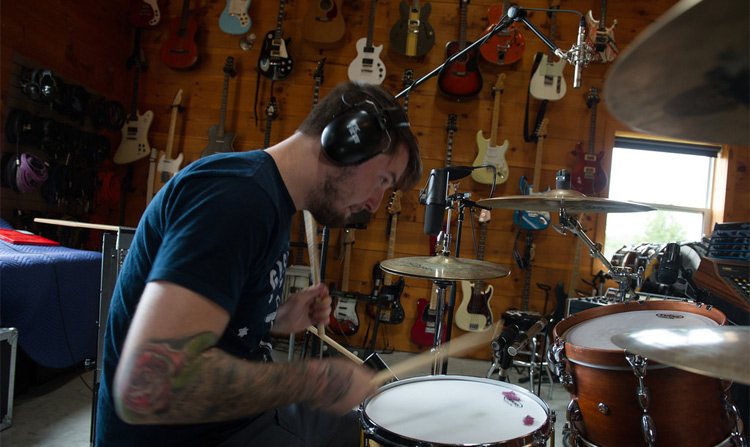
Which features and tools do you use most often?
The object editor and the ability to burn directly from the app are huge for me. Also, the way it handles ISRC codes as well as other CD text are very important to my workflow. The overall vibe of editing is also fantastic, and the app has just always been super snappy and responsive.
Your workshops help many other musicians to produce their own music. And generally there’s a clear trend towards production in home studios, especially since equipment is getting less and less expensive. You once said that “everyone can do something mediocre in their bedroom” and suggested that bands work together with professional producers instead of doing everything on their own. Why would you say it is still good to record in a professional studio? What do you think is the difference?
The biggest reason is getting away from what you’re comfortable with. It’s why I continue to enjoy recording in various spaces, cabins or even outdoor locations. The very notion of removing yourself from what you’re comfortable with will create nuances and a vibe that can’t be matched anywhere else. Gear is everywhere these days! And I can literally do with my laptop, anywhere in the world, what I can do at my studio. But it’s not about the gear. It’s never been about the gear. Working with someone that can take your ideas from inception to fruition are so important. It’s a necessary weeding out period, for some. But it’s very important to choose someone that isn’t just going to take your ideas and tear them apart to make it their own. Artist integrity is #1 for me, and creating something unique that can be enjoyed by many for years to come is what is truly satisfying.
How did you come up with the idea for the Beach Road Studio workshops, in which you teach musicians, bands and students everything about music production from preparation to the final mixing?
Having written and taught a Pro Tools course for a major recording college (OIART), teaching has always been something I’ve enjoyed.
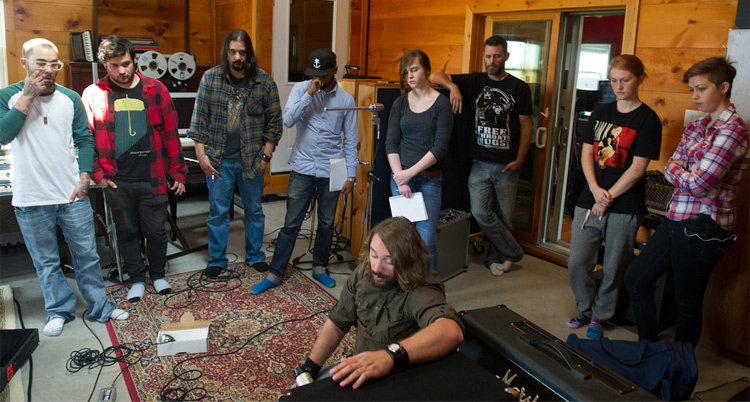
“Every album is a teaching experience!”
Especially these days, with many artists having their own gear and spaces, and yearning for more information. It made sense at some point for me to offer a small-sized, intimate recording course to others that were interested in this field. Having built up the studio to where it is now also makes it a very impressive place to hold such an event. The way we drive our workshops is that I teach a maximum of 8 students at at time, the entire process of producing a song from the very beginning, right to the mastering stage, with only the most important details in between and no filler. I’ve had students go onto major recording programs and tell me that they only learned 5 months in what I showed them in a matter of 2 days!
Which tips do you have for other producers in terms of preparing themselves for recording with bands? Would you say the preparation is more a responsibility of the band or are there also important things you have to take care of as a producer, to make sure everything works smoothly in the studio?
“The preparation is certainly a two-way street.”
Artists come to you to guide them in the making of the project, and it’s your job to get it from point A to point B. Often, I’m the first producer that many of my bands have ever truly worked with, and I make sure that their music and the integrity of the artist is #1. The beauty of Beach Road is the sheer amount of instruments and equipment that exist here – often, I have bands show up with nothing more than a guitar and their voice. When one thing doesn’t work, you grab another thing off the wall and try it! It keeps it spontaneous, creative and fun.
Next Post >
Artist Interview: Simtem
< Previous Post
Artist Interview: Garry King
Related Posts
Interview with Bombay Bicycle Club frontman Jack Steadman.
Magix Audio interview with Jack Steadman, frontman of British indie rock band Bombay Bicycle Club about his work with Samplitude.
Interview with producer Garry King
In this interview, drummer and producer Garry King shares his tips and experience on recording drums the right way.
2 million new beat producers in only 15 months
The number of Music Maker downloads has hit the 2 million mark! Learn everything you need to know about the free version here.
SOUND FORGE Artist Feature: Live Sets Chicago
Live Sets Chicago documents DJ sets of acts like Mark Farina, Sander Kleinenberg, with the help of SOUND FORGE Pro Mac software.
